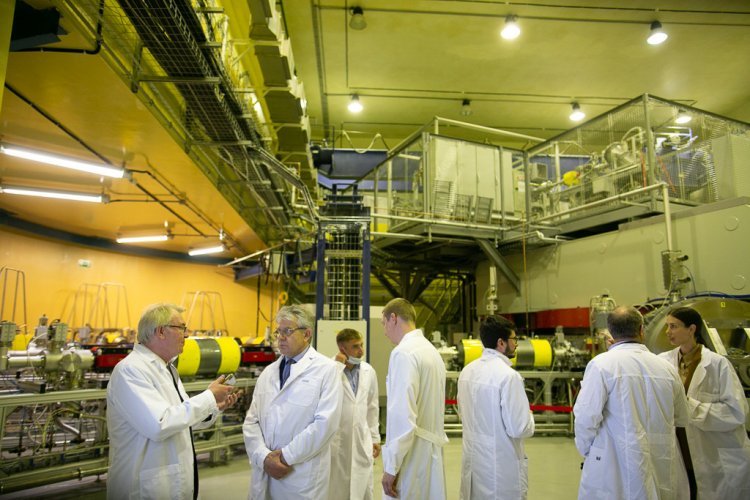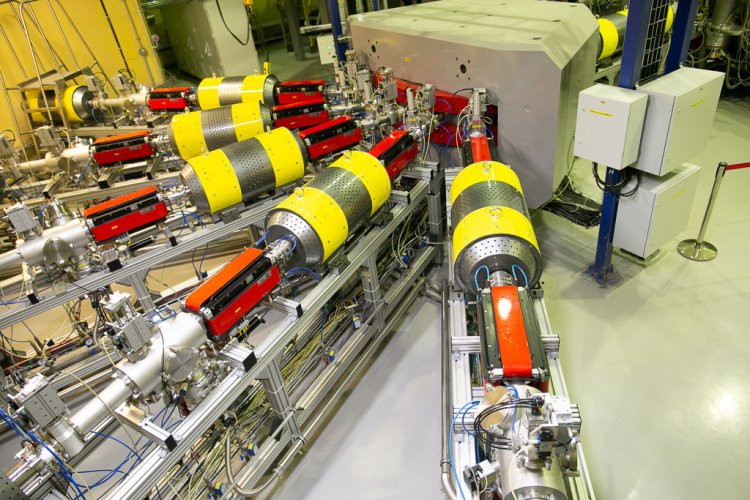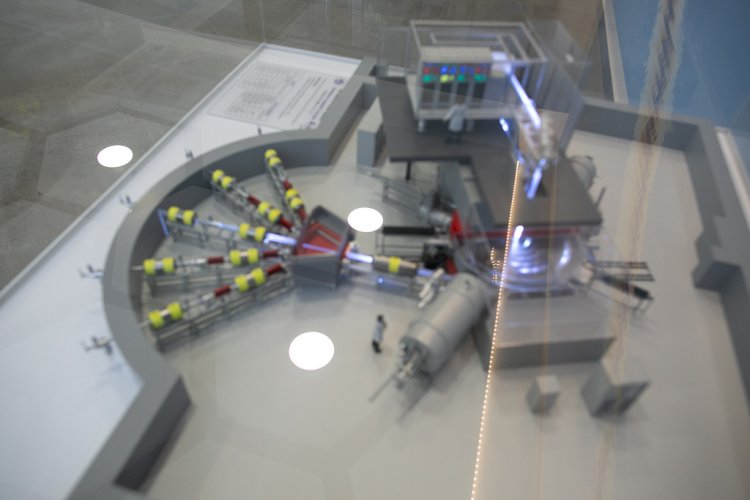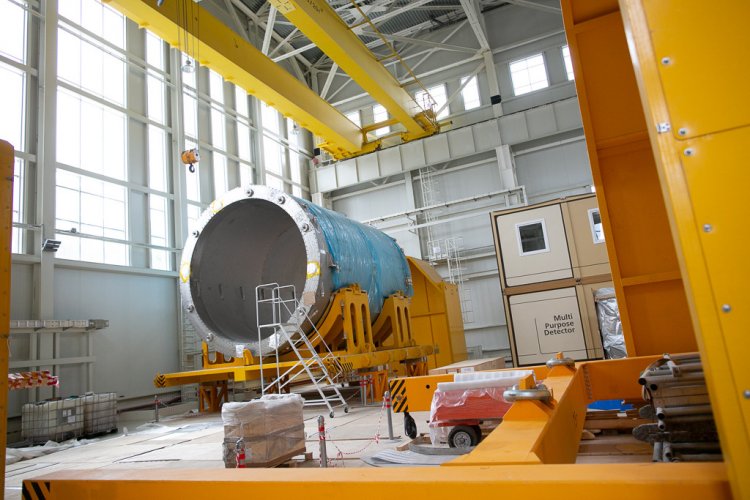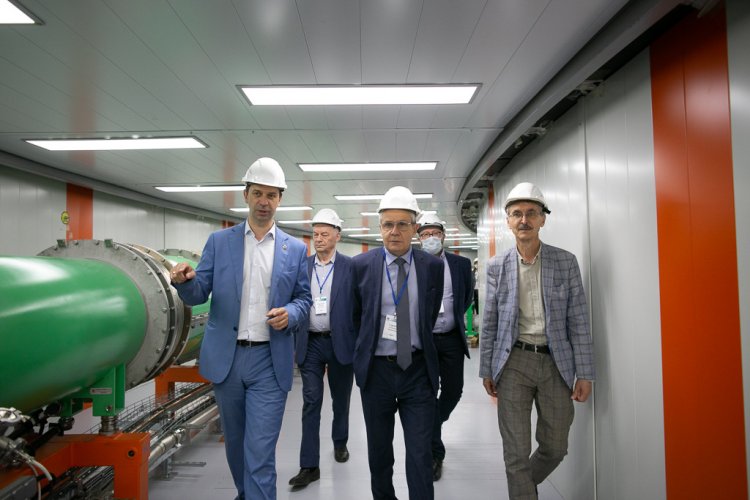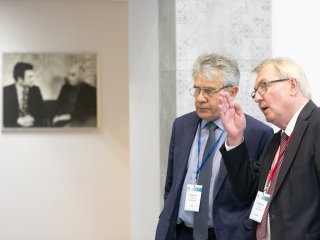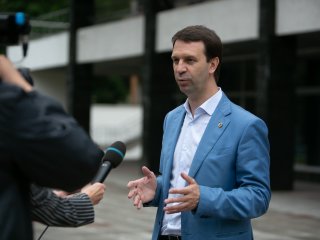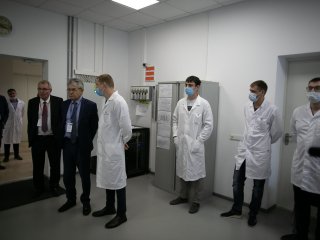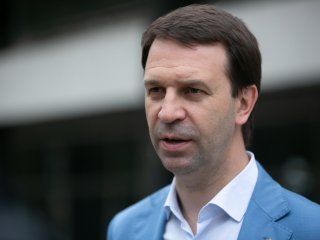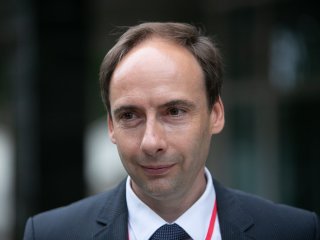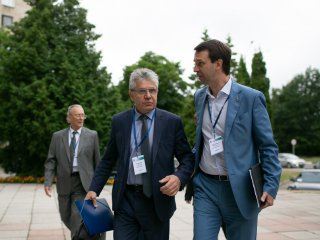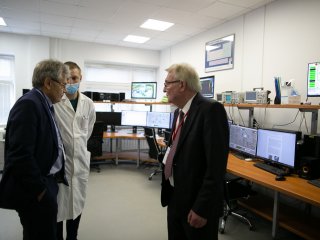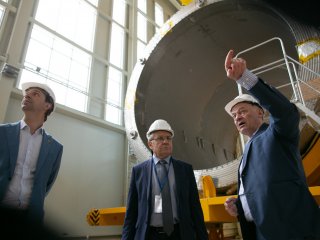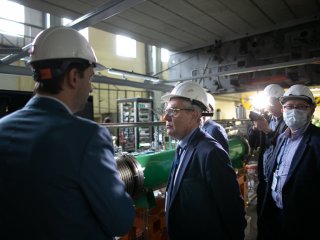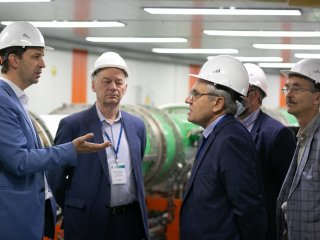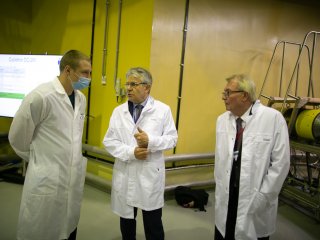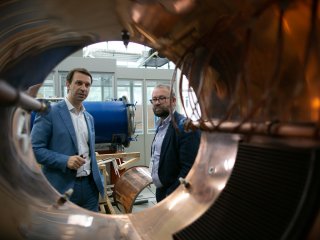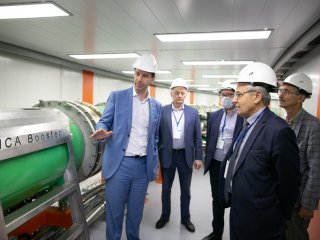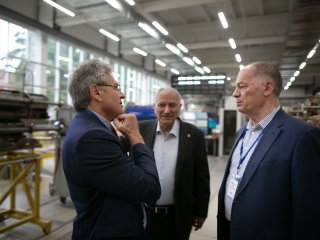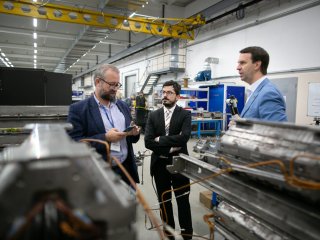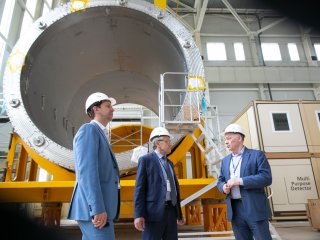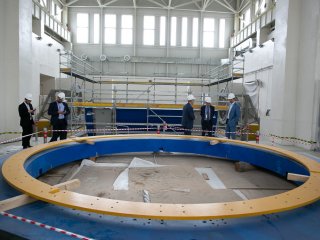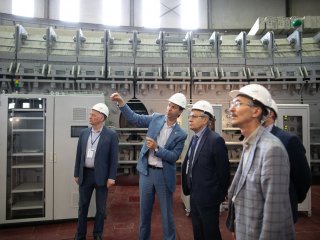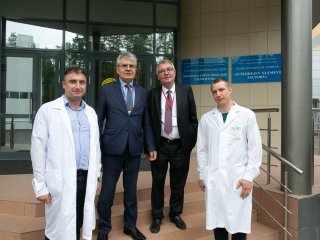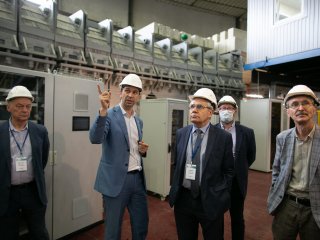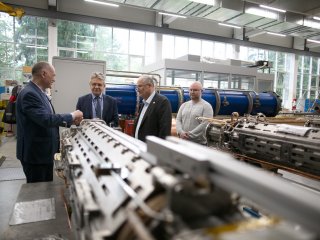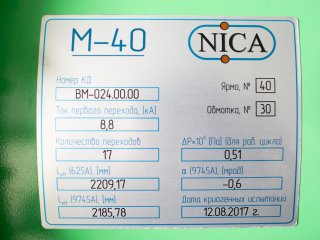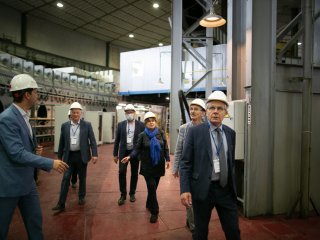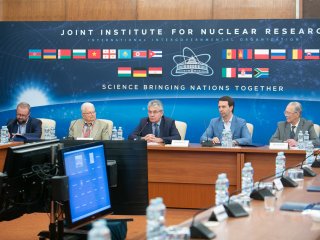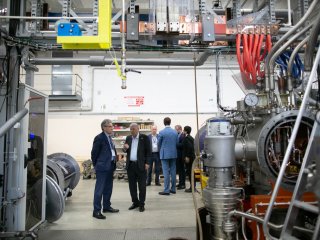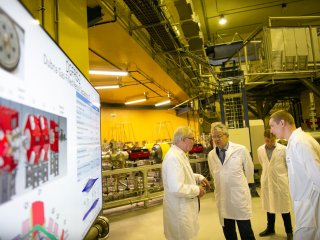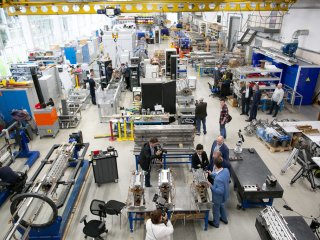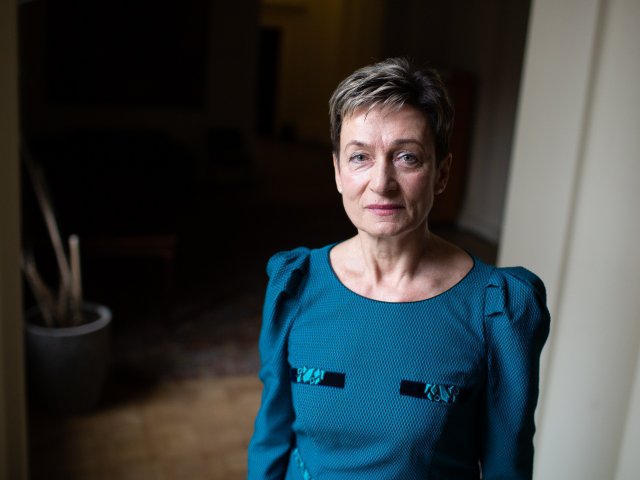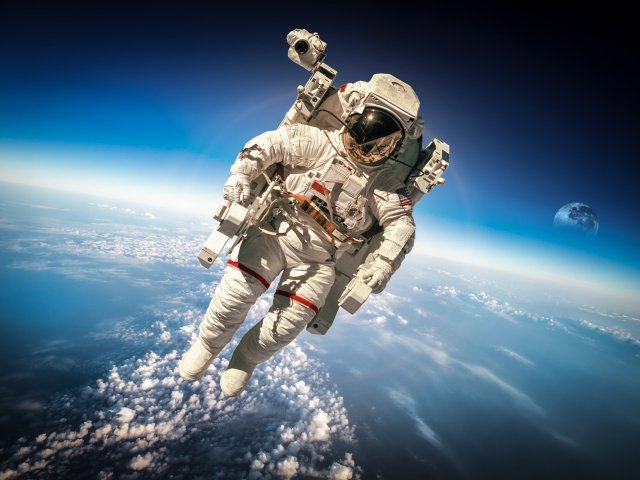Research into unknown regions of the periodic table promises the creation of new materials that can include superheavy elements. This was among the topics discussed in Dubna from June 30th to July 2nd. The Joint Institute for Nuclear Research (JINR) under the auspices of the Council of the Russian Academy of Sciences on Heavy Ions held a meeting on Super-Heavy Elements.
The hall of the International Meetings House brought together about two hundred participants, roughly one-half of them participating live and the rest connected online, including specialists from abroad. Reports and presentations included reports on scientific programs and promising developments. Academician Alexander Sergeev, the President of the Russian Academy of Sciences, took part with his presentation Ionization of Vacuum in Superstrong Laser Fields.
No photographs or reports would be able to show the scale – so the results and recent developments of the Institute were spoken about in JINR’s laboratories as well. The first two highlights mentioned in the context of the Dubna-based Institute are large-scale installations: the Super-Heavy Element Factory in operation since 2019 and the NICA Collider which is still under construction.
Inside JINR’s Nuclear Reaction Lab
Humming noise at the Super-Heavy Element Factory is so loud that just three steps away, one can barely hear what the employees of the Nuclear Reaction Lab are telling the President of the Russian Academy of Sciences, Alexander Sergeev. The DTs-280 cyclotron at the Joint Institute for Nuclear Research in Dubna releases cores of moscovium, the 115th element.
“The Factory has boosted productivity 10-fold compared to what we had before it,” says Yuri Oganessian, the head researcher of the Laboratory of Nuclear Reactions. The U-400 cyclotron had operated at Dubna before this factory, used for synthesizing the last known elements of the periodic table, including the most recently discovered oganesson, the 118th element. New capacities for experimenting with subsequent elements had become necessary over time, and in 2019 the Factory was commissioned at the JINR.
“We proceed with baby steps: starting with one microampere, then 1.2, 1.5, two and three microamperes. Here we stopped,” Yuri Oganessian refers to the need of safeguarding the valuable target made of americium-243. It is manufactured in a dedicated reactor, requiring a years-long process.There is so little substance to be bombarded with a beam of calcium ions. But scientists want more: experiments have to push the limits of the setup and proceed with synthesizing new elements. This requires preparation which is described as the most difficult stage.
A component of the DTs-280 cyclotron
Inside JINR’s Nuclear Reaction Lab
The 119th elementof the periodic table, if and when synthesized, will open Period 8. To obtain it, you the particle used for bombarding the target must be changed. Theoretically, the target itself could also be changed, but even the most powerful reactors are not capable of producing a target made of elements beyond californium, the 98th element. And switching to a different particle reduces the likelihood of coming up with a new element: to make up for the difference, the superheavy element factory has to use a more intense beam. The scientists plan to use the titanium-berklium reaction for synthesizing the 119th element. Yet, there are plans already on hand for the 120th element. Experiments involving titanium-californium and chromium-curium pairs will be undertaken in a quest to synthesize it.
A replica of the Superheavy Element Factory
The NICA project site is no quieter than the Superheavy Element Factory – actually, it is a live construction site. Once installed and put into operation, the collider will enable scientists to recreate quark-gluon plasma in laboratory conditions. This is a special state of matter that the universe was filled in moments after the Big Bang. Physicists will be able to observe how fundamental quark particles will begin to group and form normal nuclear matter.
In the Year of Science and Technology JINR plans to carry out their first experiments on the collider: “We must demonstrate the beam from its source, the booster, the transfer to the nuclotron channel and from there the output to the first active setup known as Barionic Matter on the Nuclotron. That is, the whole cycle of beam injection, its acceleration and output to an operational research setup must be demonstrated,” says Vladimir Kekelidze, Vice Director of JINR. A booster was launched at the JINR at the close of the past year. It is designed to accumulate and accelerate particles. Physicists from Novosibirsk mount a transition channel from the booster to the nuclotron.
Residents of Dubna remember the November of 2020 when a yellow sarcophagus containing a huge coil of a superconducting magnet was trucked slowly through the streets of the city. This was the basic component of a multi-purpose detector (MDP), called the heart of the collider, that will help study the collision of heavy ions. It has not yet been installed in the magnetic core, waiting to be attended by a manufacturer representative from Italy whose visit is temporarily held back due to the pandemic. JINR staff hopes that they will have the magnet installed in July and will carry out their first tests of the magnet in September after hooking it up.
Superconducting magnet coil for MDP
Next to the NICA booster
“The Joint Institute for Nuclear Research is an organization equaled by none in Russia. In fact, it is the only international organization that operates under its own charter,” said Alexander Sergeev, President of the Russian Academy of Sciences, for whom a guided tour was arranged at Institute’s laboratories.
At the conference on Super-Heavy Elements, the Gregory Trubnikov, the Director of JINR, proposed to sign a memorandum outlining programs related to the synthesis and study of superheavy elements.
A tour of JINR’s Nuclear Reaction Lab and the NICA Project
A comment by A. Sergeev, RAS President
A comment by G. Trubnikov, JINR Director
A comment by V. Kekelidze, JINR Vice Director
A comment by A. Karpov, scientific secretary of JINR’s Nuclear Reaction Lab
A comment by Yu. Oganessian, head researcher of Nuclear Reaction Lab
